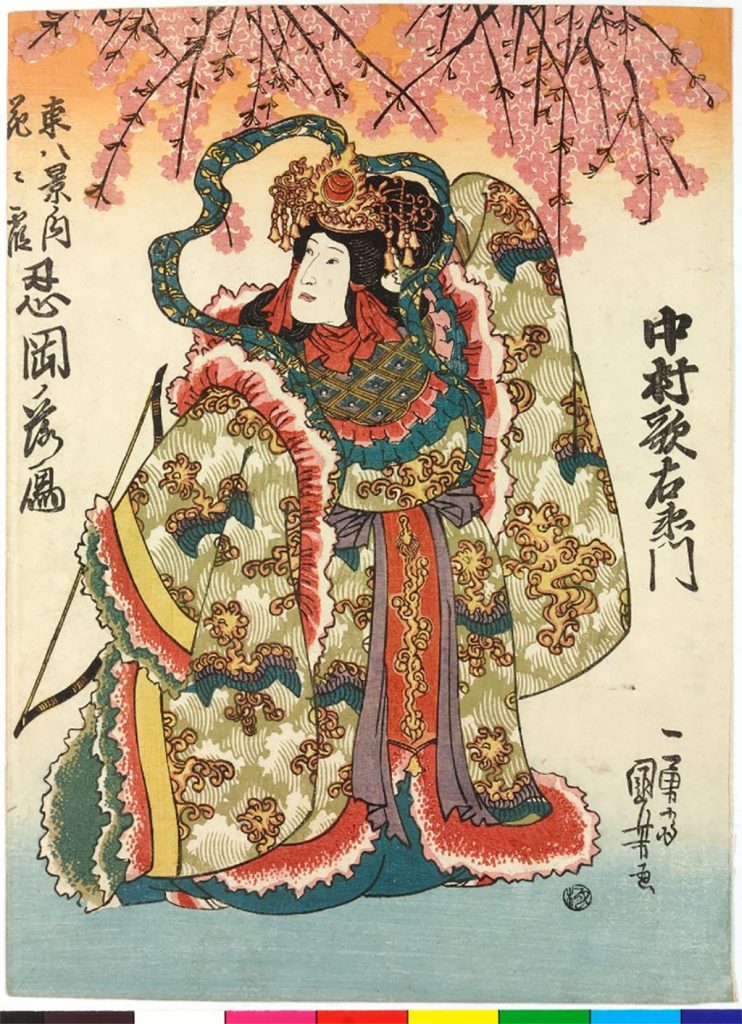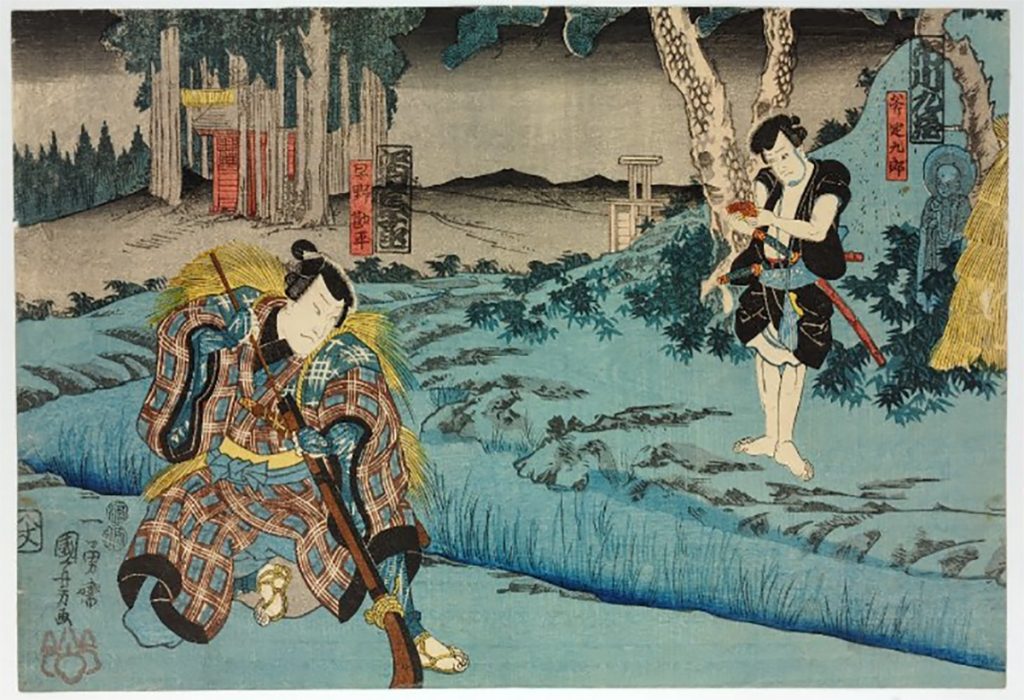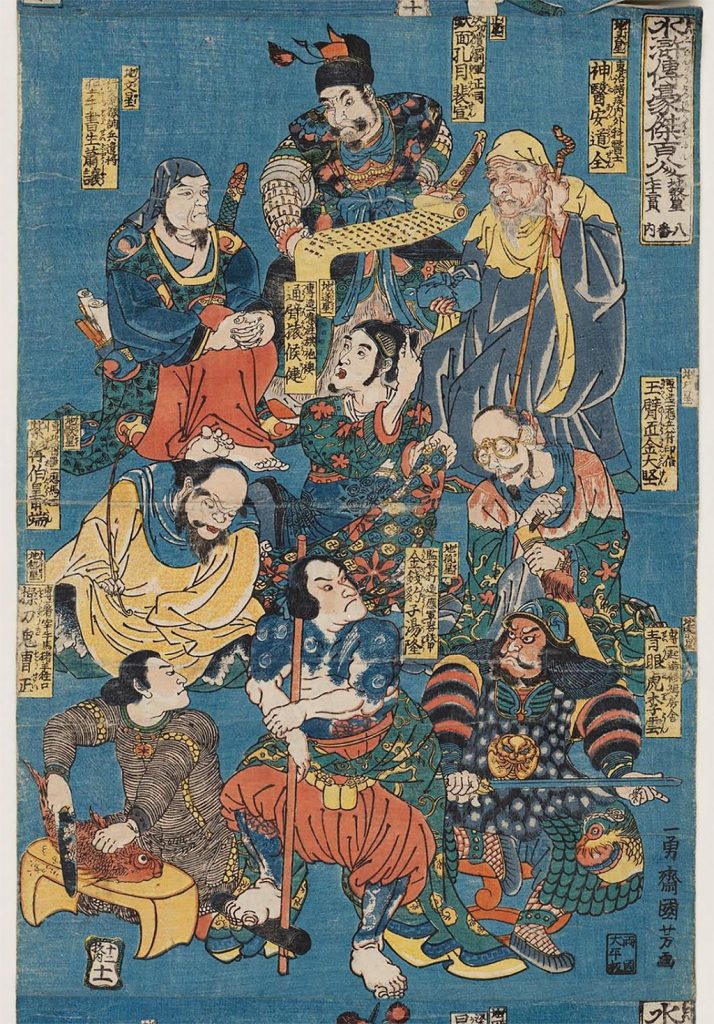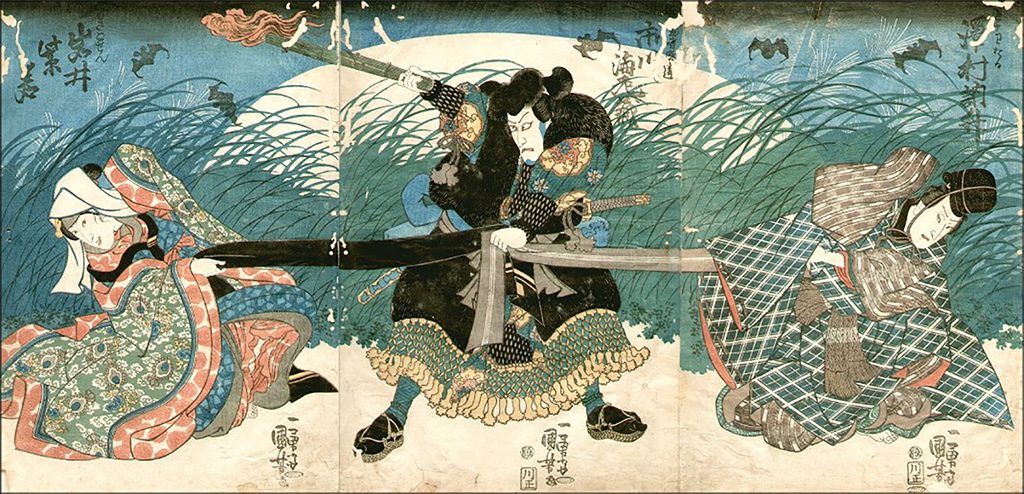Utagawa Kuniyoshi – Shinobu no oka rakugan 忍岡落雁 (Falling geese at Shinobu no oka) / Azuma hakkei uchi 東八景内 (Eight views of Edo) – 1840

Utagawa Kuniyoshi – The actors Sawamura Sojuro as the farmer Hayano Kanpei kneeling and loading his gun (left) and Ichikawa Kuzo as Ono Sadakuro holding up a stolen purse (right), in a scene from the kabuki play Kanadehon Chushingura. – Edo period

Utagawa Kuniyoshi – Sheet 11 of 12 (Jûnimai no uchi jûichi), from the series One Hundred and Eight Heroes of the Shuihuzhuan (Suikoden gôketsu hyakuhachinin) – Edo period

Utagawa Kuniyoshi – Actors Iwai, Ichikawa, and Sawamura – 1830s

Utagawa Kuniyoshi (歌川 国芳?, January 1, 1797[1] – April 14, 1861) was one of the last great masters of the Japanese ukiyo-e style of woodblock prints and painting.[2] He was a member of the Utagawa school.[3]
The range of Kuniyoshi’s subjects included many genres: landscapes, beautiful women, Kabuki actors, cats, and mythical animals. He is known for depictions of the battles of legendary samurai heroes.[4] His artwork incorporated aspects of Western representation in landscape painting and caricature.[2]
He was born on January 1, 1797, the son of a silk-dyer, Yanagiya Kichiyemon,[1] originally named Yoshisaburō. Apparently he assisted his father’s business as a pattern designer, and some have suggested that this experience influenced his rich use of color and textile patterns in prints. It is said that Kuniyoshi was impressed, at an early age of seven or eight, by ukiyo-e warrior prints, and by pictures of artisans and commoners (as depicted in craftsmen manuals), and it is possible these influenced his own later prints.
…
Despite his promising debut, the young Kuniyoshi failed to produce many works between 1818 and 1827, probably due to a lack of commissions from publishers, and the competition of other artists within the Utagawa school (Utagawa-ryū).[3] However, during this time he did produce pictures of beautiful women (‘bijinga‘) and experimented with large textile patterns and light-and-shadow effects found in Western art, although his attempts showed more imitation than real understanding of these principles.
…
The ‘Tenpō reforms’ of 1841-1843 aimed to alleviate economic crisis by controlling public displays of luxury and wealth, and the illustration of courtesans and actors in ukiyō-e was officially banned at that time. This may have had some influence on Kuniyoshi’s production of caricature prints or comic pictures (giga), which were used to disguise actual actors and courtesans. Many of these symbolically and humorously criticized the shogunate (such as the 1843 design showing Minamoto no Yorimitsu asleep, haunted by the Earth Spider and his demons) and became popular among the politically dissatisfied public.
There are more than 30,000 extant prints by Kuniyoshi; I obviously cannot reproduce them all, so I used the ‘redneck method’ and put up the ones that struck my fancy.
There is a whole world of ukiyo-e woodblock prints out there. I suggest going to Ukiyo-e.org and getting lost in it- I certainly do…